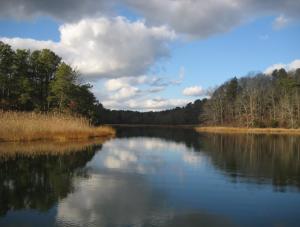Habitats of Mashpee
Atlantic White Cedar Swamps
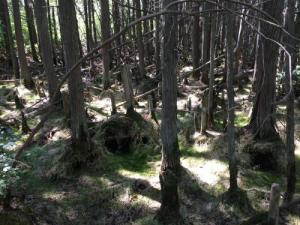
Within Mashpee’s conservation lands lay pockets of vegetation that seem to be out of a prehistoric era. Shades of green and brown dominate a scene featuring tall evergreens with moss covered roots showing above standing pools of water. The sunlight filters through the evergreen branches to an understory that shades shrubs and herbs along the floor.
These rare environments are Coastal Atlantic White Cedar Swamps. Atlantic White Cedar Swamps are areas where Atlantic White Cedars make up at least 25% of the vegetation. For coastal swamps the rest of the vegetation consists of a dense shrub layer with plants such as blueberry bushes and inkberry; starflower and cinnamon fern can be found in the sparse herb layer. The stands grow in waterlogged peat that overlays sand and gravel deposits left behind by glaciers with standing water present for approximately half of the growing season.
The Atlantic White Cedars, scientific name Chamaecyparis thyoides, are part of the Cypress family and are a conical evergreen. They grow up to 70-80 feet tall and their trunk diameter is approximately 2-4 feet wide. They can be as old as 200 years but stop growing after 100 years. Their natural habitat stretches down the east coast from central Maine to Florida and west to Mississippi. In six states they are classified as a rare species. This rarity is due to past and current threats. White Cedars had previously been cleared for posts and shingles and are now being cleared to make way for development. Even if the trees are not removed for development, they can still be threatened if the hydrologic regime in their area is disrupted. Too much water and seedlings will drown, too little and they will succumb to drought. Because they need open spaces to grow, shrubs and hardwoods can outcompete Atlantic White Cedars. However, this can be mitigated by controlled burns. Burning the area reopens the space, providing an ideal habitat for regrowth of Atlantic White Cedars.
Where they are still intact Atlantic White Cedar Swamps are a sight to see! You can find these amazing swamps in the Mashpee Pine Barrens.
Information from Natural Heritage & Endangered Species Program.
Frost Bottom
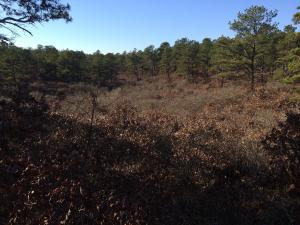
Frost bottom habitats form from large depressions left by retreating glaciers, and create freezing microclimates within forested areas that inhibit growth of trees and large shrubs. Therefore, low-growing herbaceous plants are able to re-sprout and provide food during scarce times of the year. These habitats rely on naturally-occurring forest fires that have been suppressed over time due to human development. In Mashpee, an example of this rare habitat is located off Lovell’s Road (see images and map to right). New England Cottontail, Eastern box turtles, and buckmoths are known to utilize this type of habitat, as well as the surrounding pitch pine/scrub oak uplands. For more information, see:
http://www.nature.org/ourinitiatives/regions/northamerica/unitedstates/m...
Pitch Pine/Scrub Oak Forest
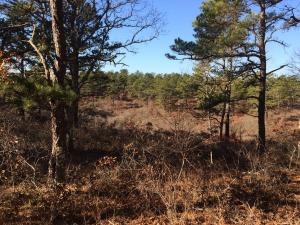
Estuaries and Marshes
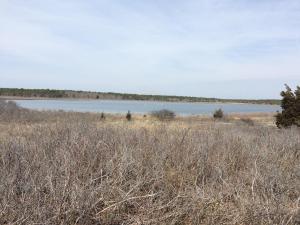
Vernal Pools

Rivers
